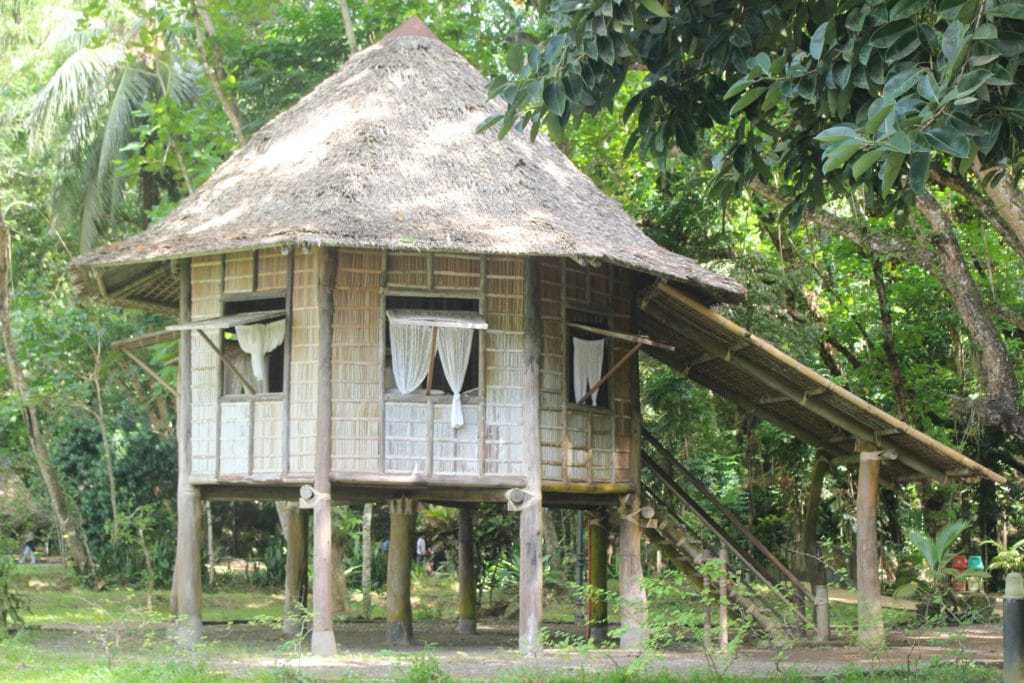Frequently Asked Questions
How much does a Nipa Hut cost in the Philippines?
The cost of a Nipa Hut in the Philippines can vary depending on the size, location, materials used, and whether it is pre-fabricated or custom-built. On average, a basic Nipa Hut can cost anywhere from a few thousand pesos to tens of thousands of pesos. Additional features and customization will affect the final price. It's best to consult with local builders or suppliers for accurate pricing.
What is my Nipa Hut?
Your Nipa Hut is a cozy sanctuary nestled amidst nature, offering peace and tranquility. It provides a respite from the hustle and bustle of daily life, where you can unwind, connect with your inner self, and find solace in simplicity.
Where are Nipa Huts located in the Philippines?
Nipa Huts are commonly found in rural areas across the Philippines, especially in provinces and coastal regions where the materials for these traditional houses, such as nipa palm leaves, bamboo, and wood, are abundant. They are often seen in communities where a simpler way of living is preserved, showcasing the country's cultural heritage and connection to nature.
What is a Nipa Hut made of?
A Nipa Hut is traditionally made of bamboo, nipa palm leaves, and other natural materials such as wood and cogon grass. These huts are known for their simplicity, resilience, and natural cooling properties due to their design and materials used.
How to build a Nipa Hut in the Philippines?
Building a Nipa Hut in the Philippines requires natural materials like bamboo and nipa leaves. Design the frame, walls, and roof with these materials, ensuring proper ventilation and sturdy construction. Thatch the roof with nipa leaves for waterproofing. Embrace the traditional architectural style to create an authentic Nipa Hut.
Where to buy a Nipa Hut in the Philippines?
You can buy a Nipa Hut in the Philippines from local craftsmen, specialized stores, or online platforms that offer traditional Filipino architecture. Visiting rural areas or contacting architectural suppliers can also help in finding a Nipa Hut to purchase.
Where can I find Nipa Huts?
Nipa huts can typically be found in rural areas or traditional communities in countries like the Philippines and Indonesia. These simple yet charming structures are usually made from bamboo, wood, and nipa palm leaves, providing a glimpse into the local culture and lifestyle of these regions.
What is Nipa Hut in Tagalog?
A "Nipa Hut" in Tagalog refers to a traditional Filipino house made of bamboo and nipa palm leaves. It is known for its lightweight construction, natural materials, and traditional design that allows for natural ventilation. The Nipa Hut is an iconic symbol of Filipino culture and heritage.
How much to build a Nipa Hut in Palawan?
The cost of building a Nipa Hut in Palawan varies depending on the size, materials, and location. It typically ranges from a few thousand pesos to tens of thousands, with prices fluctuating based on specific design preferences and construction requirements. It's recommend to consult with local builders or suppliers for accurate estimates.
What does a Nipa Hut symbolize?
A Nipa Hut symbolizes Filipino culture, tradition, simplicity, and connection to nature. It represents community, hospitality, and resilience in the face of challenges. The thatched roof and bamboo structure embody sustainable living and harmony with the environment.
How much to build a Nipa Hut in the Philippines?
The cost to build a Nipa Hut in the Philippines varies based on factors like location, size, materials, and design. Prices can range from a few thousand pesos for a basic structure to tens of thousands for a larger, more elaborate version.
Is Nipa Hut Pasig open?
As of the latest update, Nipa Hut Pasig is currently closed. Please check their official website or contact them directly for the most up-to-date information on their operating hours and availability before planning your visit.
How to make a Nipa Hut?
To make a Nipa Hut, first, gather bamboo poles for the frame and nipa palm leaves for the roof. construct the frame in a raised platform and attach the nipa palm leaves in layers to form the roof, ensuring proper ventilation and sturdiness. Complete the hut by adding finishing touches like windows and doors.
How to draw a Nipa Hut step by step?
To draw a Nipa Hut step by step, start with sketching the basic outline of the hut's structure and roof. Add in details like the thatched roof, bamboo poles, and wooden stilts. Finish by refining the lines and adding textures to bring the drawing to life.
What materials are needed for a Nipa Hut?
For a Nipa Hut, essential materials include bamboo, nipa palm leaves, nylon strings, cogon grass, and bamboo nails. These natural materials are vital for constructing the traditional Filipino dwelling, providing stability, insulation, and a sustainable shelter solution.
Can Nipa Huts withstand typhoons?
Nipa huts have traditionally proven resilient against typhoons due to their flexible and lightweight design, allowing them to sway with strong winds. While they may sustain damage, their natural materials and construction often offer better resistance compared to more modern structures in such extreme weather conditions.
Are there modern variations of Nipa Huts?
Yes, there are modern variations of Nipa Huts that incorporate contemporary design elements and materials while still preserving the traditional essence and functionality of the original structure. These updated versions often feature improved durability, enhanced aesthetics, and more versatile uses while maintaining the cultural significance and charm of the traditional Nipa Hut.
What cultural significance do Nipa Huts hold?
Nipa Huts, known as "Bahay Kubo" in the Philippines, symbolize community, tradition, and simplicity. They serve as a reminder of the country's rural roots, promoting a connection to nature and a sense of harmony with the environment.
Who traditionally builds Nipa Huts?
Nipa Huts are traditionally built by skilled craftsmen known as "bahay kubo" builders. These craftsmen have expertise in constructing these traditional dwellings using natural materials like bamboo and nipa palm leaves. Their craftsmanship is passed down through generations, preserving the cultural heritage of Nipa Hut construction.
What maintenance do Nipa Huts require?
Nipa Huts require regular inspection and repair of the nipa palm roofing, as well as reapplication of nipa leaves to maintain its waterproofing. The bamboo structure should be checked for signs of wear, and any damaged materials should be promptly replaced to uphold the hut's structural integrity and longevity. Regular cleaning and pest control measures are also essential to preserve the overall condition of the Nipa Hut.
Do tourist resorts use Nipa Huts?
Yes, tourist resorts sometimes incorporate Nipa Huts to offer a traditional and authentic experience for visitors. These huts are often used as private accommodations or dining areas to showcase local culture and architecture while providing a unique stay for tourists looking for a more immersive experience.
How long does a Nipa Hut last?
The lifespan of a Nipa Hut varies depending on maintenance, climate conditions, and material quality. On average, a well-maintained Nipa Hut can last anywhere from 20 to 30 years. Regular upkeep and repairs can help extend its longevity.
Can Nipa Huts be expanded?
Nipa Huts can be expanded through the addition of more modules or sections to accommodate larger structures. This expansion can be achieved by connecting multiple huts together or adding extensions to the existing structure, providing more space and functionality to the overall design.
Do Nipa Huts provide adequate insulation?
Nipa huts offer natural insulation due to their design and materials. The thatched roof helps regulate temperature by keeping the interior cool in hot climates. However, in extreme weather conditions or colder regions, additional insulation may be needed for comfort.
Are Nipa Huts eco-friendly?
Nipa Huts are eco-friendly due to their use of sustainable materials like nipa palm leaves and bamboo, promoting natural ventilation and cooling effects. Their traditional design integrates seamlessly with the environment, requiring minimal energy consumption and blending harmoniously with nature.
What is the history of Nipa Huts?
Nipa huts, also known as bahay kubo, have a rich history in the Philippines dating back to pre-colonial times. These traditional houses are constructed with natural materials like bamboo and nipa palm leaves, showcasing the ingenuity and resourcefulness of Filipino architecture.
How are Nipa Huts ventilated?
Nipa Huts are traditionally ventilated through the use of elevated floors and tall thatched roofs that allow for natural airflow. Additionally, the design often includes gaps in the walls or lattice work to promote cross-ventilation, ensuring a cool and breezy interior environment.
What are the dimensions of a standard Nipa Hut?
The dimensions of a standard Nipa Hut vary but typically range from 6 to 8 meters in length, 4 to 6 meters in width, and 3 to 4 meters in height. These dimensions can be adjusted based on the specific needs and preferences of the builder or homeowner.
Are Nipa Hut kits available for purchase?
Yes, Nipa Hut kits are available for purchase. You can find a variety of options online or through local suppliers. These kits typically include all the necessary materials and instructions for assembling your own traditional Filipino Nipa Hut. Prices and availability may vary depending on the supplier and location.
Can foreigners own Nipa Huts in the Philippines?
Yes, foreigners can own Nipa Huts in the Philippines through a long-term lease agreement with a Filipino landowner. Foreigners are not allowed to own land in the Philippines, but they can possess structures built on leased land for up to 50 years, renewable for another 25 years.






